User sub routines (Groovy): How to proceed?
I/O parameters: operating
This is the different stages to use an user sub routine to model an I/O parameter.
| Stage | Description | Example |
|---|---|---|
| 1 | User creates a new I / O parameter. |
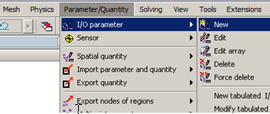
|
| 2 |
User selects:
Then, he clicks on the editor of formula. |
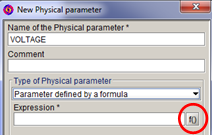
|
| 3 | User clicks on the “User” button. Then, he may enter the arguments that he wants into the “User” function. |
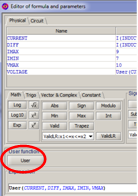
|
| 4 | Clicking on the “Edit user function” button, Flux opens the file “PhysicalParameter.groovy” into the Python editor. |
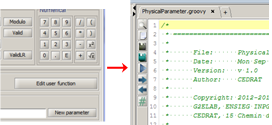
|
| 5 | User may code the program he wants. | |
| 6 |
Once his program is written, user has to save his file. Then, the Groovy file is stocked in the current Flux project (…\persistent\groovy). |
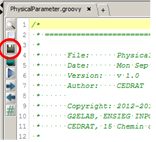
|
Material properties: operating
This is the different stages to use an user sub routine to model the properties of a material.
| Stage | Description | Example |
|---|---|---|
| 1 | User creates a new material. |
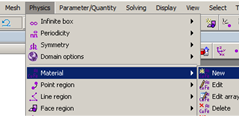
|
| 2 |
User selects:
|
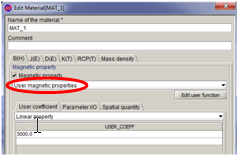
|
| 3 |
Then, user selects the type of his material:
|
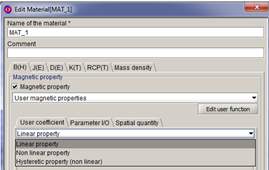
|
| 4 |
Then, user selects the number and the values of:
|

|
| 5 |
When user clicks on the “Edit user function” button, Flux opens into the Python editor, the file:
|
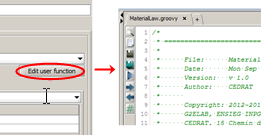
|
| 6 | User may code the program he wants. | |
| 7 |
Once his program is written, user has to save his file. Then, the Groovy file is stocked in the current Flux project (…\persistent\groovy). |
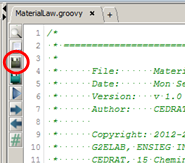
|